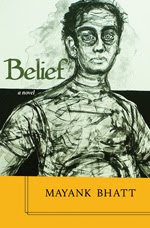
It was with great reluctance that I began to read Sir Vidya Naipaul’s A Bend in the River. It stems from my perception of Naipaul as a political writer, even when he’s writing fiction.
I acknowledge that largely all writing is political. But Naipaul wears his politics on his sleeves.
A Bend in the River is also an example of Naipaul’s politics – a politics that is seemingly an apologia for colonialism. In recent years, especially in the 1990s, Naipaul suddenly rediscovered his Hindu roots – but not the religion’s innate tolerance.
His aversion to Islam became the focal point of his writing – evident in India: A Million Mutinies Now, and several other non-fiction commentaries periodically published in the Indian mainstream media. Naipaul eventually became an apologist for the Hindu fundamentalism.
It culminated in his being awarded the Nobel Prize for Literature in 2001 (a month or so after 9/11). Of course, the justification was couched in politically correct overtones and Naipaul was termed as Joseph Conrad’s true heir.
But there was no escaping Naipaul’s novel.
So, I started reading A Bend in the River. And I didn’t stop. I couldn’t.
Naipaul is a magician. Words are putty in his hands. He shapes them the way he wants. He shapes them to mean what he wants them to mean. Often, he shapes them to mean what they aren’t supposed to mean.
I assumed – erroneously, it turned out – that the novel (written in 1979) was about the experiences of Asians in Uganda under Idi Amin. However, a quick reference check on the Wikipedia informed me that the unnamed country likely resembles Mobutu Sese Seko’s Zaire (Democratic Republic of Congo).
I remembered that in the 1970s Mobutu and Zaire remained constantly in the news for several reasons – Muhammad Ali and George Foreman’s famous Rumble in the Jungle match. Mobutu helped organize this major media event in 1974 to publicize African nationalism and his country. The fight, in which Ali defeated Foreman, was an all-time classic. Norman Mailer wrote a book about the fight.
Naipaul’s novel depicts Mobutu as the Big Man, and Raymond, a white man who helped shape the Big Man’s mind, offers his (Mobutu’s) best defence. Salim, the protagonist, remains perpetually unsure and wary of the turn of events that culminates in the Europeans abandoning the land and the emergence of the new Africa.
Indar, Salim’s childhood friend and the one leads a far more fetching life than Salim, becomes a confused apologist for the colonial rulers – confused because he at once finds himself and alien and therefore unaccepted in the London society and at the same time an alien and unaccepted by India and Indians.
I don’t think anyone can come near Naipual in capturing the angst of the immigrant without sentimentality or anger. All that we get to know of Salim from Naipual is that his ancestors are from northwestern India and that he’s trying to escape from the clutches of both tradition and responsibility by moving inland from the port city to a town located at a bend in the river.
As Salim says, “When we had come no one could tell me. We were not that kind of people. We simply lived; we did what was expected of us, what we had seen the previous generation do. We never asked why; we never recorded. We felt in our bones that we were a very old people; but we seemed to have no means of gauging the passing of time. Neither my father nor my grandfather could put dates to their stories. Not because they had forgotten or were confused; the past was simply the past.”
(Though Naipaul doesn’t tell us, I presume Salim is an Ismaili Khoja, the Gujarati-speaking Muslims who emigrated from northwestern India. I believe Canadian novelist Moyez Gulamhussein (MG) Vassanji, too, has the same roots as Salim).
The novel’s fluidity is engaging. It moves lyrically and the describes the place, the people, the changing situations that constantly remain in a flux but never change so radically as to alter any reality substantially. These aspects – and Salim’s unassuming manner almost wanting to hide in the disorder of his own shop – make the novel languid and sonorous.
One cannot escape Naipaul’s politics and pettiness in his creations, and A Bend in the River is no exception to that. But the novel transcends the commonplace even as it stays firmly situated in it, and describes everything from the point of view of a man who doesn’t even make a difference to his life, leave aside making a difference to anyone else’s or to the world.
When you read a classic – and A Bend in the River is a classic –, it exhausts you emotionally, because the act of reading becomes cathartic.
Image: http://www.smh.com.au/ffximage/2007/11/02/A_Writers_People_071102024807049_wideweb__300x476.jpg











